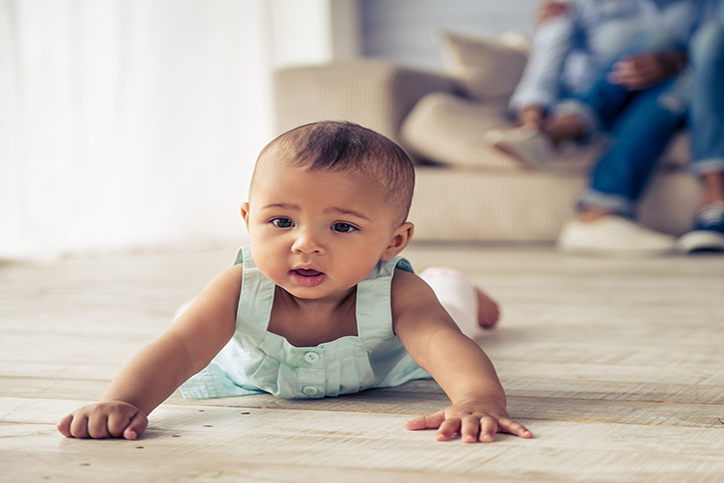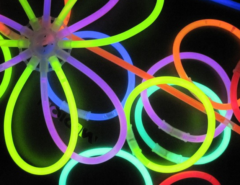Editor’s Note: This post was guest authored by Erin Merino, MBA, senior marketing specialist for the University of Maryland School of Pharmacy, who became a first-time mom in March 2019. The views presented represent her experience poison proofing her home to help make it a safe space for her baby to grow and explore.
As a new parent, it’s exciting each time your baby reaches a new milestone. However, with some of those milestones, such as crawling, once the excitement dies down, comes the realization that life will never be the same. Gone are the days when you could simply put your baby down and expect them to be in the same spot a minute later.
As soon as a baby starts to scoot, crawl, cruise, or walk, it’s time to baby proof. My baby started crawling around seven months, so I made sure to move anything dangerous off the floor. By nine months, he could stand, so I had to rethink and make sure all hazards were out of his reach.
Poison Proofing
In addition to putting up baby gates, securing furniture to the wall, and covering outlets, it’s important to look around your house for potential poisons. Thirty-six percent of calls to the Maryland Poison Center (MPC) in 2019 involved children under the age of six. And, it is important for us as new parents to understand that a poison can be any substance that can harm someone if it is used in the wrong way, by the wrong person, or in the wrong amount.
In the past year, I’ve looked to the MPC to make sure that I am taking the necessary steps to prevent a poison exposure. The MPC website has a lot of great resources for parents of kids of different ages, including babies, toddlers, young children, and teens.
I discovered some common poison hazards often found around the house include:
- cosmetics/personal care products
- cleaning products
- medicines
- batteries
- plants
- foreign bodies/toys
- carbon monoxide
It’s a good practice to make sure those items are stored up, away, and out of sight of children. I also learned that child resistant caps are not child proof. Given enough time, children can open safety caps, so proper storage is key. A good tip is to never keep medicine in baggies, because children associate baggies with treats.
I learned that proper storage for cleaning products means keeping them away from where food is stored and in their original container. I have invested in some magnetic cabinet locks for items that can’t be safely stored up high.
As for plants, I made sure that none of the plants in my house are poisonous and that any leaves that might fall wouldn’t be in area my son could reach.
I also made sure to check the batteries in my carbon monoxide alarms.
Online Resources
The MPC website has a lot of resources that explain how to talk to your children about poisons, such as never calling medicine candy and making sure your children know to ask you first before tasting or touching something. I will keep these tips in mind as my baby becomes a toddler.
I also urge all new parents to check out the MPC’s poison safety checklist and to text “poison” to 797979 to add the poison center’s phone number (1-800-222-1222) to your contacts in case there is ever an emergency.
One thing I’ve learned in my first year as a parent is that nothing is ever truly “baby-proof,” but you can take certain steps to help make your house safer. There is so much that a new parent has to worry about, but following these poison safety tips can help take some of the stress away.





Leave a Reply